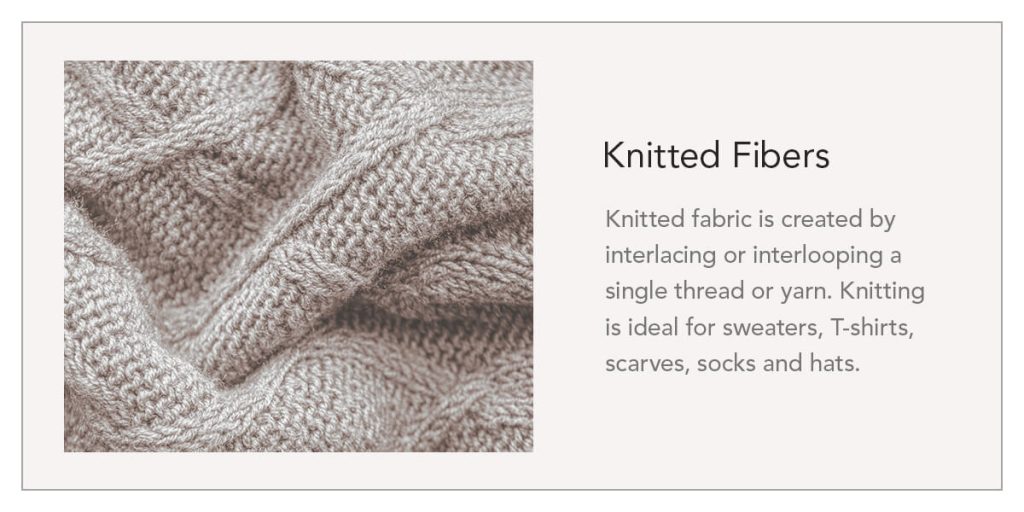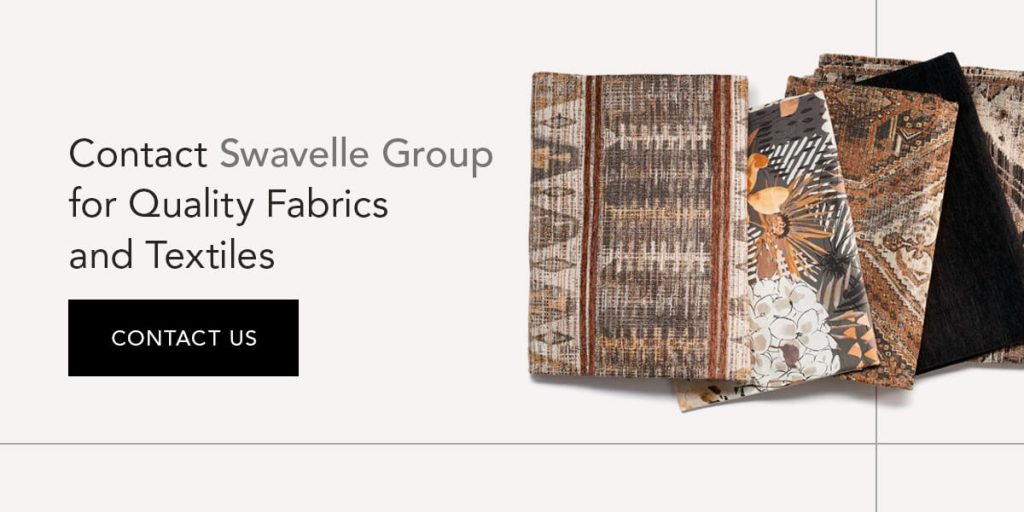Fabric is in many items we use daily, from clothing and bags to home decor. It is no surprise that the global textile market reached nearly $1,700 billion in 2022 and is expected to grow by 7.6% until 2030.
Textiles are made from natural or synthetic fibers or a combination of both. These fibers are spun into yarn and processed into fabric by methods like knitting and weaving. Many fabrics are available, some of which we explore in this article.
Fibers fall into one of these two classifications.
Natural fibers come from elements of the natural world, as the name suggests. They are harvested in their purest form, spun into yarns or threads, then knit or woven to create fabrics. These fibers are naturally durable, absorbent and eco-friendly, as they do not use any chemicals during production.
Natural fibers can be plant-based or animal-based. Some plant-based natural fibers are:
The two most common animal-based natural fibers are wool and silk. Wool comes from many different animals, including sheep, goats, camels and rabbits.
Synthetic fibers are manufactured through chemical processes. Typically, the fibers are extracted through a spinneret, a device with small holes that extrudes a melted polymer to form yarn. Synthetic fibers are less expensive to produce than their natural counterparts. They are also generally more durable, waterproof and stain-resistant.
Some examples of synthetic fibers are:
Fibers can be woven or knitted into fabrics. Here are the main differences between these processes.
Woven fabric is created by weaving two sets of thread or yarn on a loom. Woven textiles can be treated or finished to provide better breathability and waterproofing. They are also readily available, cost-effective and easy to source. Some items made with woven fabrics include denim clothing, trousers, button-up shirts, curtains, rugs and furniture upholstery.
Conversely, knitted fabric is created by interlacing or interlooping a single thread or yarn. Compared to woven fabric, it is stretchier and easier to construct into smaller pieces. Knitting is ideal for sweaters, T-shirts, scarves, socks and hats.
Woven fabrics have limited stretchability. Weaving looms tend to use tighter tension than knitting machines. Woven textiles typically only stretch diagonally. This attribute makes them popular for upholstery, as it prevents the fabric from sagging and losing its shape when draped over furniture.
Knitted fabrics are made from one thread or yarn and use less tension, which allows them to stretch freely in multiple directions.
Knitted fabrics shrink easily with frequent washing. Yarns used for knitting have fibers with natural or synthetic twists, crimps or scales that create elasticity, holding the fibers in place during knitting. When the fabric is exposed to moisture, heat or stress, the fibers contract, altering the fabric’s size and shape.
Woven fabrics are less prone to shrinking during washing. They use tighter tension and are more stable than knitted fabrics. While knitted fabrics are soft, warm and comfortable, woven textiles are more durable.

There are many natural and synthetic fabric materials, each offering unique characteristics and applications. Here are some common types of fabrics.
Polyolefin is a synthetic fiber that comes from propylene, ethylene or other olefins. Polyolefin fabric is:
Here are some of its common uses:
Cotton is a soft, fluffy and durable fiber that comes from the cotton plant. Manufacturers spin cotton into yarn and weave or knit it into various items, like dresses, shirts, undergarments, pillowcases and bedsheets. Cotton is comfortable, breathable and hypoallergenic. However, it dries more slowly than other materials and is prone to wrinkling and shrinking.
Acrylic fabrics are knitted or woven with synthetic acrylic fibers. These fibers come from acrylonitrile, a fossil fuel-based organic compound. Acrylic fabric is soft, lightweight and quick-drying. It has an array of uses, including:
Silk is a shiny natural fiber from the nests and cocoons of silkworms. It is a natural insulator. Silk is also incredibly soft, smooth, breathable and lightweight. These qualities make it a premier choice for various items, including:
Cashmere is a lightweight wool fabric from cashmere and pashmina goats. Its fine and delicate fibers provide excellent insulation, softness and warmth. It is often mixed with other types of wool to increase its weight. Cashmere is commonly found in clothing, such as sweaters, scarves, jackets, socks and hats.
Linen is a strong, lush and lightweight fabric that comes from the flax plant. The flax strands are typically spun into yarn and blended with other fibers. It is smooth, breathable, absorbent and machine-washable. Air can easily pass through the material to regulate body temperature, making it ideal for summer clothing. However, it requires frequent ironing since it creases easily.
Linen has a range of uses, including:

Our team at Swavelle Group domestically produces various fabrics and textiles. Our products add long-lasting beauty and strength to homes, health care facilities, corporate offices and many other settings.
We strive to provide our clients with visually pleasing designs and sustainable manufacturing practices. That way, they can offer the same level of quality to their own customers.
By choosing Swavelle for custom-made fabrics, you receive one-on-one attention, prompt turnaround times and products that accommodate your unique requirements and applications.
Delight your customers with durable custom fabrics by Swavelle Group. Reach out to our team today if you would like to learn more about our products and services.